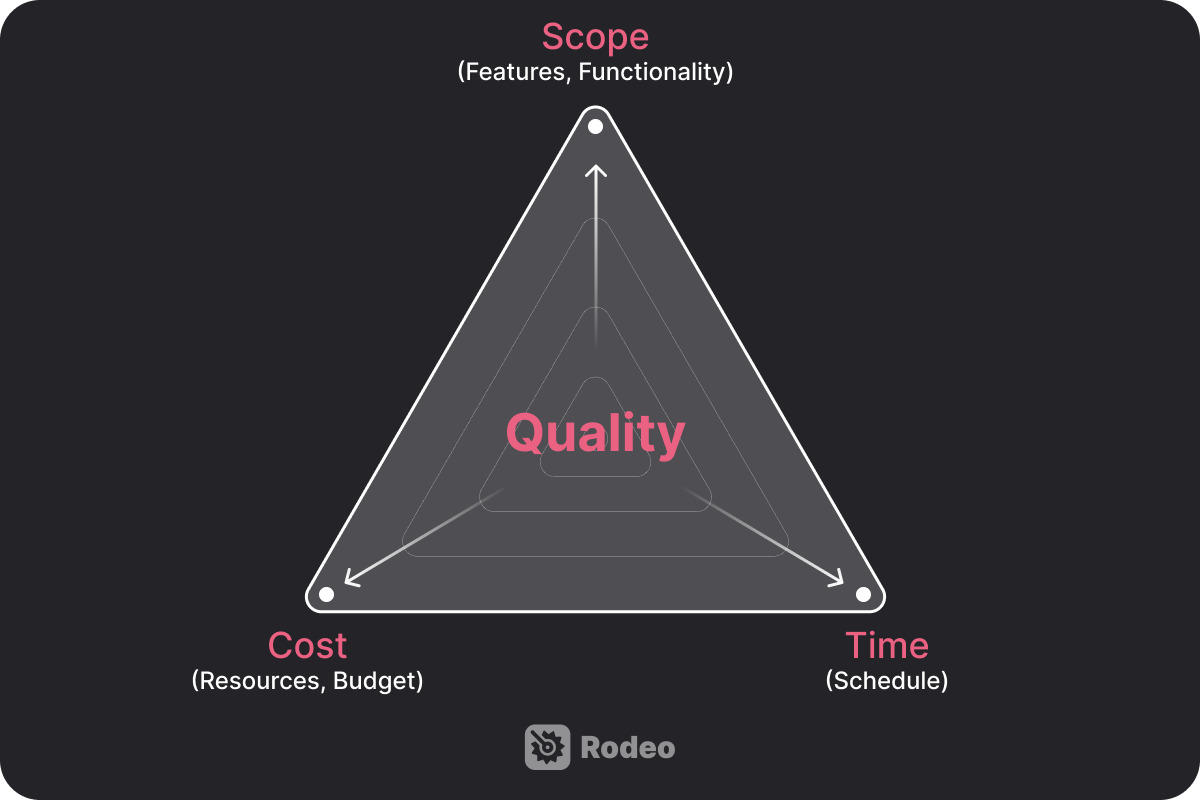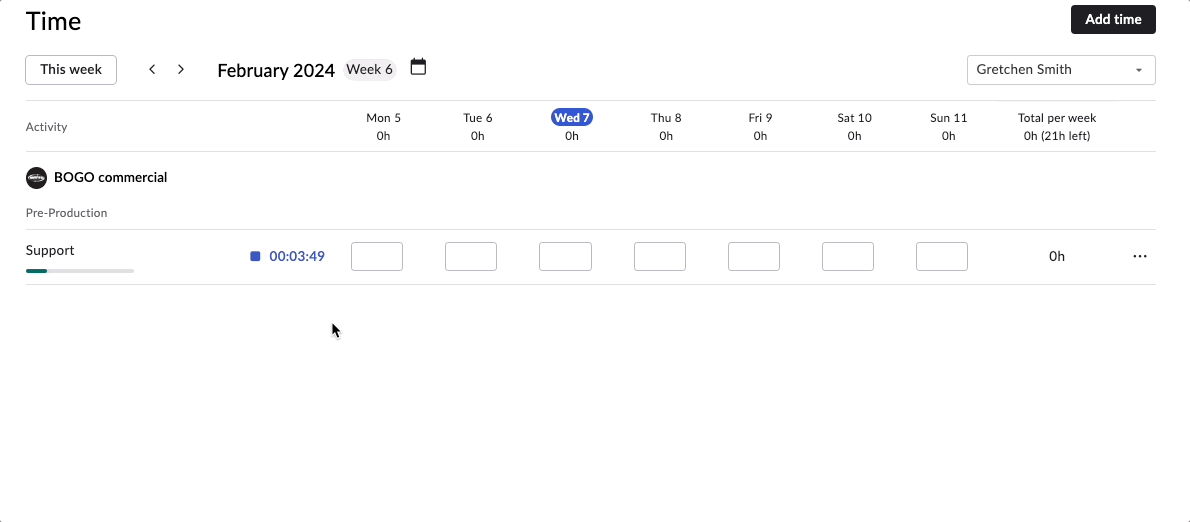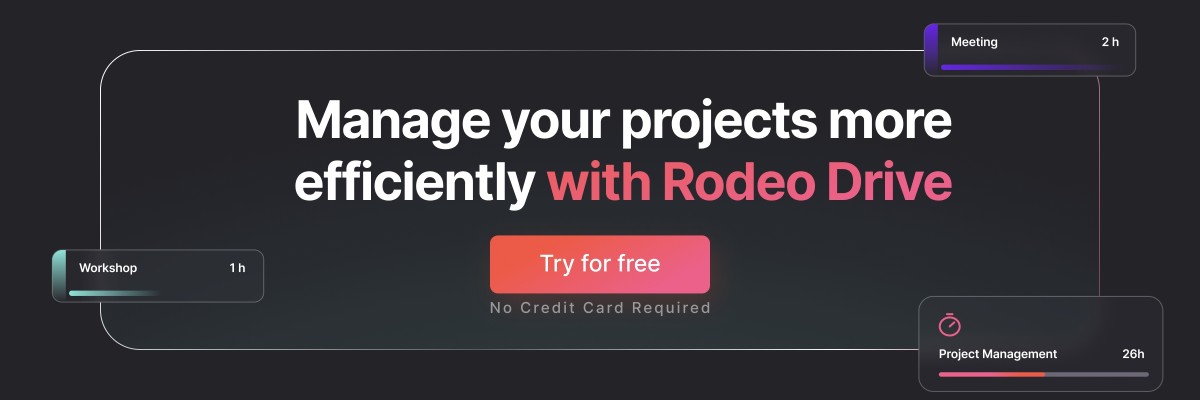50 Important Project Management Terms You Need to Know
Project management involves hundreds of different terms and other lingo you’ll need to learn to efficiently communicate with your team. It can be intimidating to even know where to start.
In this blog, we’ll give you the rundown of the top 50 project management terms to familiarize yourself with.
General project management terms
New to the industry? Tired of hearing terms thrown around without knowing what they mean? No worries! Here’s a look at the basic project management terminology you should brush up on before jumping into the field.
1. Dependencies
Some tasks can only be worked on once other tasks are completed. This is known as a dependency, as your ability to complete one task is dependent on the completion of another. For example, if your project involves creating a commercial, your team can only film the footage once the script is completed.
Dependencies are important to be aware of and keep an eye on since a delay in one task will also delay the completion of the second task, which may have severe consequences for your project timeline.
Needing a little boost? Learn 12 ways to upgrade your task management skills.
2. Deliverables
Your project deliverables are the assets or results your team is expected to have completed by the conclusion of the project. These are the outcomes that your team was hired to produce, which can be tangible or intangible, such as producing a report or successfully launching a new product.
3. Mission critical
You’ll sometimes hear project managers or other project management professionals describe a task or activity as “mission critical.” This term is used to describe tasks that are absolutely crucial to the success of the project, and if unsuccessfully completed, the entire project could fail.
4. Order of magnitude
Order of magnitude is a rough way to estimate the cost of a project when you don’t have very many details to go off. Since this estimate will be revisited later on, it’s usually a wide price range. Order of magnitude estimates are most commonly used during the very early stages of a project when it’s unclear if the client will choose to work with your team.
5. Program manager
Whereas a project manager directly manages the nitty gritty details of a project, program managers sit at a higher level and oversee all projects within a program. Their focus tends to be on ensuring larger organizational goals are met and that projects are correctly delegated to the project managers.
6. Project baseline
Your baseline includes the starting point of your project cost and schedule, which you can compare your actual progress to as your team makes headway. Having your baseline numbers as a metric for comparison makes monitoring your team’s performance easier.
Related: What Is a Project in Project Management? Definition, Examples, and More
7. Project charter
A project charter is a document that describes the objectives, scope, and organizational structure of a project. Usually, the project manager creates the project charter and presents it to key stakeholders for approval, after which the project is authorized to begin.
Not every project requires a project charter, but it can certainly be helpful in getting the stakeholders to understand the project on a higher level.
Pro tip: Check out our project charter template for an easier planning process.
8. Project manager (PM)
The project manager — or “PM” for short — is the leader of the project. They spearhead the project's strategic planning process and make sure that everything runs smoothly from beginning to end.
A project manager is usually in charge of communicating with clients or stakeholders, managing the team’s workload, and problem-solving when issues arise.
Also read: Which Project Management Team Roles Are Key for Success?
9. Project Management Institute (PMI)
The Project Management Institute, often referred to as PMI, is the leading professional organization for project management. PMI releases reports and publications on industry trends, while also providing education and certification opportunities for those looking to further their career as a PMP. Most gold-standard project management certifications are issued by the PMI.
10. Project management life cycle
The project management life cycle refers to the duration of the project from start to finish. All projects undergo five phases, which lay the foundation for the project life cycle: initiating, planning, executing, monitoring, and closing.
11. Project Management Professional (PMP)
A project management professional is usually anyone who works in the project management field, even if they don’t have the title of project manager. Sometimes the term is used to refer to people who have received a formal project management certification from the Project Management Institute.
Learn how to become a project manager.
12. Project management software
Project management software is a type of tool that teams use to manage projects from start to finish. There are many software tools you can use at various points in the project process — such as QuickBooks or a spreadsheet tool.
That said, many teams find it easiest to opt for an all-in-one project management tool, such as Rodeo Drive. This way, you’ll have all of the features you need to manage your projects in one place.

For instance, Rodeo Drive offers budgeting, time tracking, task planning, invoicing, and reporting. The benefit of an all-in-one tool is that you can plan tasks, record your progress, and then get paid for your team’s work in a single place, which eliminates the time you’d otherwise waste switching between apps.
Want to see for yourself? Try Rodeo Drive for free today.
13. Project scope
Your project scope identifies what your project needs to accomplish. This includes the goals, objectives, deadlines, and deliverables that need to be met before your project can be considered complete and successful.
The project team alone cannot determine the project scope. Rather, the scope should be established in consultation with internal and external stakeholders, who should also give final approval on it before the project work begins.
Check out these 10 steps to handle last-minute scope changes.
.png)
14. Scope creep
Scope creep occurs when a project’s scope gets expanded beyond its original boundaries, usually when new requirements or objectives are added to your team’s plate by stakeholders after the project has already begun.
More often than not, scope creep poses a threat to the success of your project, since it typically involves changes to timelines or the quantity of work required which can easily overwhelm a project team.
15. Stakeholders
Project stakeholders include anyone with a vested interest in the project’s success or those who will be impacted by the project’s outcomes. This might include your client or even senior management at your agency who wants to leave the client satisfied. Project stakeholders can be internal or external.
Wondering what a project management office is? Our complete guide can help.

16. Triple constraint
Every single project deals with balancing the triple constraint, which consists of three things: time, cost, and scope.
These three factors are related, meaning that a change in one also requires a change in another. For instance, an increase in scope also requires an increase in either time or cost and so on. It’s the project manager’s job to keep the triple constraint under control.

Project management process terms
Now that we’ve covered some basic terms that you might’ve already heard before, it’s time to dig into the project management terms that are typically used once you’re a little deeper into the project life cycle.
17. Ad hoc tasks
Because task management typically involves detailed planning, tasks that are developed on the fly for an immediate purpose are referred to as ad hoc tasks. These types of tasks are likely to be assigned as issues arise or when unexpected events occur.
18. Analogous estimating
Analogous estimating is a budgeting method that project managers use to create estimates for new projects based on budgets or historical data from past projects. While this is a faster estimating method than starting from scratch, it’s not always accurate, since each project has its own requirements and scope.
19. Bottlenecks
A bottleneck occurs when the amount of work on your team’s plate is greater than their capacity to complete it. Bottlenecks are usually the result of poor workload and capacity management, which causes your team’s output and project progress to slow down until your team’s workload returns to a state of balance.
20. Contingency plan
Think of a contingency plan as your plan B, as it outlines exactly what actions your team will take if a risk materializes or if a worst-case scenario occurs. This way, your team will be able to spring into action before problems derail your entire project.
21. Feasibility study
Feasibility studies are conducted to determine whether a proposed project plan is achievable. They examine whether a project is likely to be successfully completed given its requirements and the resources at the disposal of the project team.
Stakeholders might conduct a feasibility study before investing a large amount of money into bigger projects, whereas the feasibility studies of smaller projects are typically significantly more informal and might be more based on market research.
22. Iterative process
An iterative process is a sort of trial-and-error approach to projects where teams refine and improve upon a project, product, or initiative until they’re satisfied with the results. Projects centered around product development most commonly adopt this kind of approach.
23. Objective and Key Results (OKRs)
OKRs are just one of several goal-setting frameworks commonly used by project management teams. OKRs stand out from other methods (such as KPIs or SMART goals) due to their focus on pushing your team to new heights.
Project teams can implement OKRs by setting a high-level objective accompanied by several measurable results that can be used to track progress toward that overarching objective.

24. Resource allocation
Resource allocation is the process of distributing your project’s finite resources. This includes resources related to time, funding, equipment, or materials. During this process, the project manager usually has to make decisions regarding which project tasks or activities warrant more resources than others.
Check out these resources to help optimize project resource allocation.
25. Risk mitigation
Project risks are circumstances outside of your control that may impact your project outcomes. Risk mitigation is the process of best preparing for these risks to either reduce their likelihood of occurring or limit the impact of them, should they happen.
Risk mitigation processes typically involve weighing the severity of various risks and assigning a team member to monitor them and prepare for their potential impact.
Avoid project management pitfalls with these tips and strategies.
26. Task management
In order to make projects more approachable, many project managers adopt a task-based approach to their team’s workflows.

This means that project work is split into tasks, which are units of work that must be completed for the project to progress. Task management is the process of keeping tasks properly assigned and organized to ensure project completion.
27. Time blocking
Time blocking involves blocking out time in your calendar for every task on your to-do list. This way, everything on your agenda will be completed and you can spend a set amount of time on each item rather than having to multitask.
Many project management professionals use this strategy not only to optimize their time during the workday but also to improve team time management.

Project management methodology terms
Because project management can be a huge undertaking, project management methodologies are used to structure workflows and team processes to make the lives of project managers easier.
There are thousands of methodologies to choose from, each providing principles, tools, and techniques to guide teams through the entire project lifecycle. Let’s take a look at some of the most common methodologies out there.
28. Agile
Agile project management typically refers to a philosophy guiding a group of methodologies that adopt an iterative approach to project development, allowing teams to quickly incorporate market trends and customer feedback into their work. Agile teams typically work in sprints, which are short bursts of work focused on a select set of objectives.
29. Hybrid methodology
Hybrid methodology is when you use two or more different methodologies on a project. This might involve combining practices from Agile or Waterfall, or adding in Kanban or Scrum principles where appropriate for your team.
This hybrid approach might be one to consider if your team’s current methodology is unable to keep up with the nuances of your project and your team’s needs.
30. PRINCE2
PRINCE2 stands for “PRojects IN Controlled Environments,” and it’s a popular project management methodology that stresses organization and control, as the name suggests. All PRINCE2 projects have 6 characteristics that the project manager tracks as the project progresses. These include scope, costs, timeline, quality, risks, and benefits.
PRINCE2 is a useful methodology for beginners since the methodology offers clearly defined processes, removing the need to craft your own processes.
31. RACI matrix
The RACI matrix is a type of project management chart that helps project managers assign responsibility for project tasks. The RACI acronym stands for Responsible, Accountable, Consulted, and Informed — each of which represents the level of involvement a team member is expected to have on a particular project activity.
For instance, someone who is marked “R” is responsible for completing that task, whereas someone marked “I” should just be kept informed on the status of the task or activity.
32. Scrum master
Scrum is a type of agile methodology, and as such, the Scrum master is in charge of ensuring a team is adopting Scrum principles. Scrum masters are agile experts, and they coach and consult the project team on the more technical side of things.
33. Sprint
Sprints are a set amount of time — usually two weeks — wherein teams work on a set amount of work to make progress toward highly focused goals. Sprints are an agile concept, which is why they’re usually used by software development teams that adhere to iterative project development.
34. Stand-up meeting
Stand-up meetings are used by agile teams to help maximize their team’s productivity for the day. That said, teams using any methodology might find them useful.
These meetings are usually only between 5 and 15 minutes, but no longer than that. The purpose is to debrief what everyone accomplished during the previous day, what they’ll work on today, and obstacles that may be getting in their way. Stand-up meetings should be fast and concise to help the team touch base without taking too much of everyone’s time.
35. SWOT analysis
SWOT stands for Strengths, Weaknesses, Opportunities, and Threats. This framework is used to assess the validity of a project and prepare for potential risks before they materialize. This is more of a brainstorming exercise and can be used at any point in the project.
That said, it’s beneficial for project managers to conduct a SWOT analysis during the early planning stages of a project.
.png)
36. Waterfall method
The waterfall methodology is perhaps the most straightforward approach to project management wherein the project manager creates a linear project plan and then executes it. Each phase of this methodology is set in stone once the project has begun. The phases are sequential and don’t overlap with any other phase.
37. Work Breakdown Structure (WBS)
A work breakdown structure is a type of diagram that helps project managers break projects down into smaller, more manageable pieces. WBS diagrams can be organized in multiple different ways, such as a spreadsheet, tree, or list. They often look like a company’s organizational chart.
Usually, a WBS will list the project objective at the top of the chart, followed by the projected phases on the next level, then followed by the project tasks for each phase on the level after that.
Common project management acronyms and abbreviations
Project management comes with a lot of different acronyms. If you’re new to the field, you might be feeling overwhelmed. Below, we’ve decoded a handful of project management terms to help you out.
38. Actual costs (AC)
Just as you might guess, actual project costs are what your project activities actually cost. Actual costs might be higher than your estimated costs for a variety of reasons, whether that’s because of material availability or workflow bottlenecks. Regardless, that’s why it’s important to record your actual costs as you incur them.
39. Cost overrun (CO)
Any situation where your actual project costs exceed your estimated costs is considered a cost overrun. Because cost overruns mean your team has overspent — regardless of the reason why — this is a situation all project managers want to avoid.
40. Cost variance (CV)
In simple terms, cost variance is calculated as earned value minus actual cost. A positive cost variance means your project is performing under budget, and a negative cost variance means your team has been overspending and your project finances may be in jeopardy.
41. Earned Value Management (EVM)
Earned value management is a method of tracking project performance based on the project schedule, costs, and scope. EVM is based on planned value and earned value, wherein the earned value is the amount that your team earns when they complete a task.
42. Estimate at Completion (EAC)
EAC stands for estimate at completion, which is essentially a way to forecast budget costs after the project has already begun. EAC allows project managers to account for obstacles that have impacted the project’s financial status while also projecting what everything will cost overall.
There are a handful of different formulas you can use to calculate EAC, but adding your actual costs to your estimate to complete is the calculation most commonly used.
43. Level of effort (LOE)
Level of effort refers to the amount of work the project manager will have to put into behind-the-scenes supportive project tasks rather than tasks directly related to propelling the project forward.
Supportive tasks typically include activities such as creating reports or communicating with stakeholders. There is always some level of LOE required on a project, as this is necessary to allow the project team to remain focused on primary project tasks.
44. Planned value (PV)
Planned value — sometimes referred to as the budgeted cost of work scheduled (BCWS) — is the amount you’ve budgeted to complete work scheduled for a particular period of time.
45. Project Management Body of Knowledge (PMBOK)
The Project Management Body of Knowledge is a guidebook of industry standards, best practices, and guidelines compiled by the Project Management Institute that serves as a go-to resource for project managers.
46. Request for proposal (RFP)
If an organization is looking for a team to help execute a project, they might send an RFP to a few agencies or project management teams indicating that they’re in the market for their services.
Typically, a request for proposal document will include the basic project requirements and ask the potential project manager a couple of questions, which are then considered as part of the team’s bid for the project.
47. Schedule variance (SV)
Schedule variance monitors if a project is properly on track by comparing where your project is actually at (via actual progress) versus where its expected progress is. This can be calculated by finding the difference between earned and planned value.
48. Standard operating procedure (SOP)
An organization’s standard operating procedures are instructions for executing routine operations. For instance, an organization might have a SOP for its documentation processes, as you’d to ensure each project is recorded in the same format.
49. Statement of work (SOW)
A statement of work is a document that describes the activities and deliverables a project team is expected to complete, as well as the schedule they’re expected to adhere to. This is typically only necessary for projects contracted between two organizations to ensure everyone is in agreement on the work to be completed.
50. Subject matter expert (SME)
As you might figure from its name, a subject matter expert is an individual with specialized knowledge in a particular area or field.
SMEs are often used in project management to help estimate the costs, timeline, and resources required for projects when the team doesn’t have enough industry expertise to make an accurate judgment.








